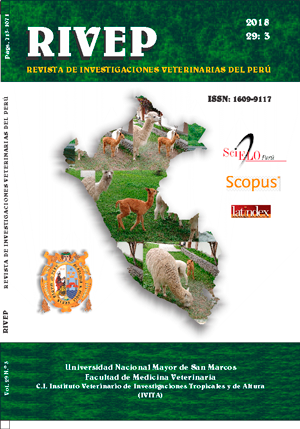Origin of the brachial plexus nerves of the white-tailed deer (Odocoileus virginianus) in comparison with other ruminants
DOI:
https://doi.org/10.15381/rivep.v29i3.14074Keywords:
anatomy, cervid, wildlife, spinal nervesAbstract
The objective of this study was to identify the spinal nerves that give origin to the brachial plexus and the origin of each of the nerves of the white-tailed deer (Odocoileus virginianus), as well as to compare the results with those reported in the literature for other ruminants. The two brachial plexuses of four specimens (three females and one male) were dissected. The brachial plexus was originated by contribution of the roots of the ventral branches of the spinal nerves from C6 to T1 (3/4), and from C6 to T2 (1/4). From these originated the suprascapular, subscapular, axillary, radial, ulnar, median, thoracodorsal, musculocutaneous, cranial pectoral, pectoral caudal, long thoracic, lateral thoracic, subclavian, and dorsal scapular nerves. The origin of the brachial plexus of O. virginianus was more similar to that reported in cattle. The formation of the nerves presents similarities and variants with what has been reported in other ruminants. Likewise, there may be interspecific, intraspecific anatomical variations, and even in the collateral plexuses of the same specimen for the origin of the nerves.Downloads
Downloads
Published
Issue
Section
License
Copyright (c) 2018 Juan Fernando Vélez García

This work is licensed under a Creative Commons Attribution-NonCommercial-ShareAlike 4.0 International License.
AUTHORS RETAIN THEIR RIGHTS:
a. Authors retain their trade mark rights and patent, and also on any process or procedure described in the article.
b. Authors retain their right to share, copy, distribute, perform and publicly communicate their article (eg, to place their article in an institutional repository or publish it in a book), with an acknowledgment of its initial publication in the Revista de Investigaciones Veterinarias del Perú (RIVEP).
c. Authors retain theirs right to make a subsequent publication of their work, to use the article or any part thereof (eg a compilation of his papers, lecture notes, thesis, or a book), always indicating the source of publication (the originator of the work, journal, volume, number and date).



